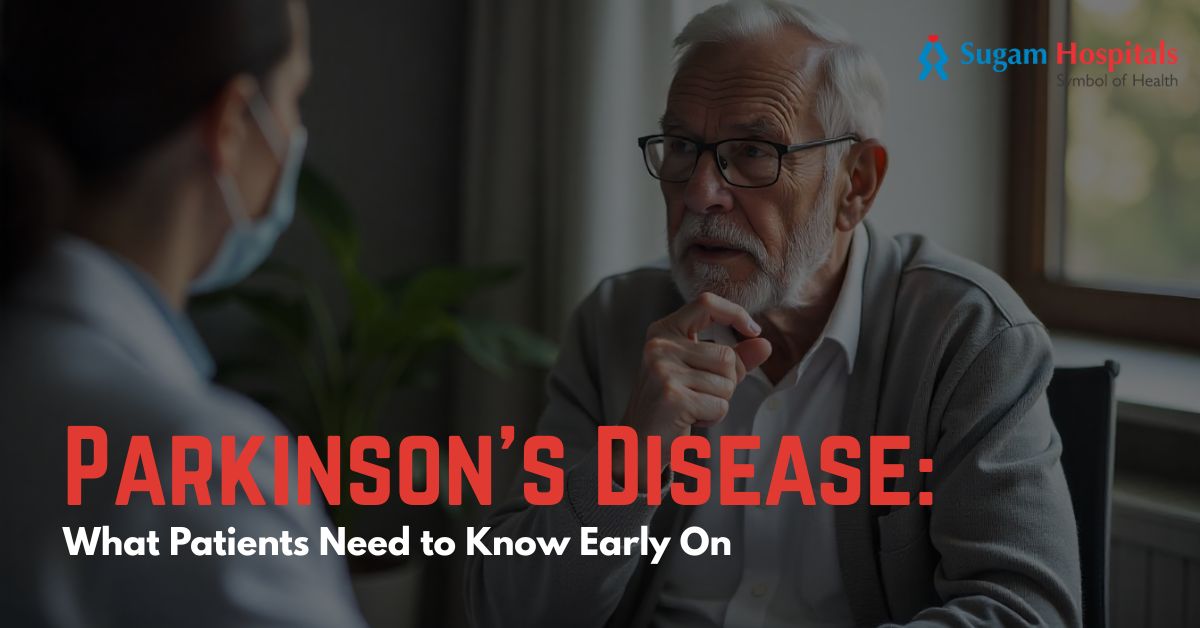Parkinson’s Disease: What Patients Need to Know Early On

Parkinson’s Disease: What Patients Need to Know Early On
September 8, 2025 by adminParkinson’s disease (PD) is a progressive neurological disease that impacts a person’s movement and balance, as well as their non-motor functions such as mood and sleep. It typically occurs in individuals over the age of 60; however, younger adults and even children can develop the disease.
Early awareness is important, in part, because an early diagnosis leads to early treatment, which can not only slow the disease but also help with quality of life and provide clarity to the patient and their families.
What Happens in the Brain
Parkinson’s disease considers that brain cells in a region of the brain called the substantia nigra begin to break down. These cells produce dopamine which allows for smoother communication of controlled movement. When dopamine production is reduced, the connection between the brain and the muscles weakens and can result in tremors and stiffness as well as being unable to perform daily living activities.
The reason that these cells begin to break down is not yet fully known. Researchers suggest that it could be a combination of pre-existing genetics and environmental factors related to toxins, head injuries, lifestyle habits etc. Note that not everyone has the same risks, but it is still worthwhile knowing to keep in mind in the first instance of early vigilance.
Recognizing Early Symptoms
The gradual nature of Parkinson’s disease is one of its greatest challenges and in many cases, the symptoms are early stage or subtle. Tremors in the hands or fingers are the most visible signs, but other motor symptoms like:
- Bradykinesia (slowed movement)
- Rigidity (stiffness in the limbs)
- Changes in posture (stooped over)
- Generally slowed movements of the opposite side of the body
Many non-motor symptoms can also present years before observable motor changes take place. This includes disturbed sleep, constipation, depression, anxiety, trouble concentrating, etc. Many patients recall these symptoms later but don’t connect them to any condition or specifically to Parkinson’s disease until after a diagnosis is made.
While it may take longer to consider all the options, when these symptoms can be identified earlier there is an opportunity for intervention sooner that leaves more time to impact the disorder and improve outcomes.
How Doctors Diagnose Parkinson’s
There is no singular test for the diagnosis of Parkinson’s disease. Instead, diagnosing Parkinson’s disease is an extensive clinical process. A neurologist assesses a patient’s medical history, asks about their lifestyle aspects and performs a neurological examination to assess his or her movements, reflexes and coordination. The physician may request imaging, such as an MRI or a DaTscan to exclude any other factors that are not Parkinson’s.
Detecting the disease earlier will not only help get some answers, but in many ways a diagnosis will give the patient access to medications and therapies sooner, meaning potentially prolonging their level of independence.
Treatment and Management Options
Although Parkinson’s cannot be cured, there are many ways to lessen the impact of the symptoms with different treatment strategies. Medication continues to be the foundation of treatment since levodopa is the most prescribed drug; however, dopamine agonists and other drugs can also be prescribed based on the stage of the disease.
Physiotherapy is very valuable to keeping and improving muscle strength and flexibility besides, but is helpful in some cases. Occupational therapy can assist a patient in changing certain tasks of daily living by teaching the individual to limit the physical stress placed on their body. Speech therapy can assist those people needing to adjust to some change in swallowing or voice.
In some more advanced cases patients have options for surgical treatments like Deep Brain Stimulation (DBS). This is a surgical procedure that targets specific areas of the brain by implanting electrodes into the brain that rides and control the electrical impulses or other abnormal activity.
Living Well with Parkinson’s
There’s more to managing Parkinson’s than just medical treatment, it also involves lifestyle changes. Regular forms of exercise, such as walking, yoga or swimming can improve balance and general health and the exertion of exercise can improve mood. A diet rich in fiber, antioxidant and hydration, are great for both brain and digestive health
Emotional health is equally important. Counseling, support groups and family education can equal a great deal of well-being. Patients that engage with family and friends, engage in socialization, pursue hobbies and stay mentally engaged with life tend to have a better quality of life.
Parkinson’s Disease is progressive, it is true; however, how we manage this disease can make a tremendous positive difference. If we leverage health information, receive medical input in a timely manner, and manage our lifestyle changes, we can expect to enjoy active and fulfilling lives. If you are looking for expert care and a variety of treatment options, visit a Top Neurologist in Chennai and visit with that person for your Parkinson’s care.

